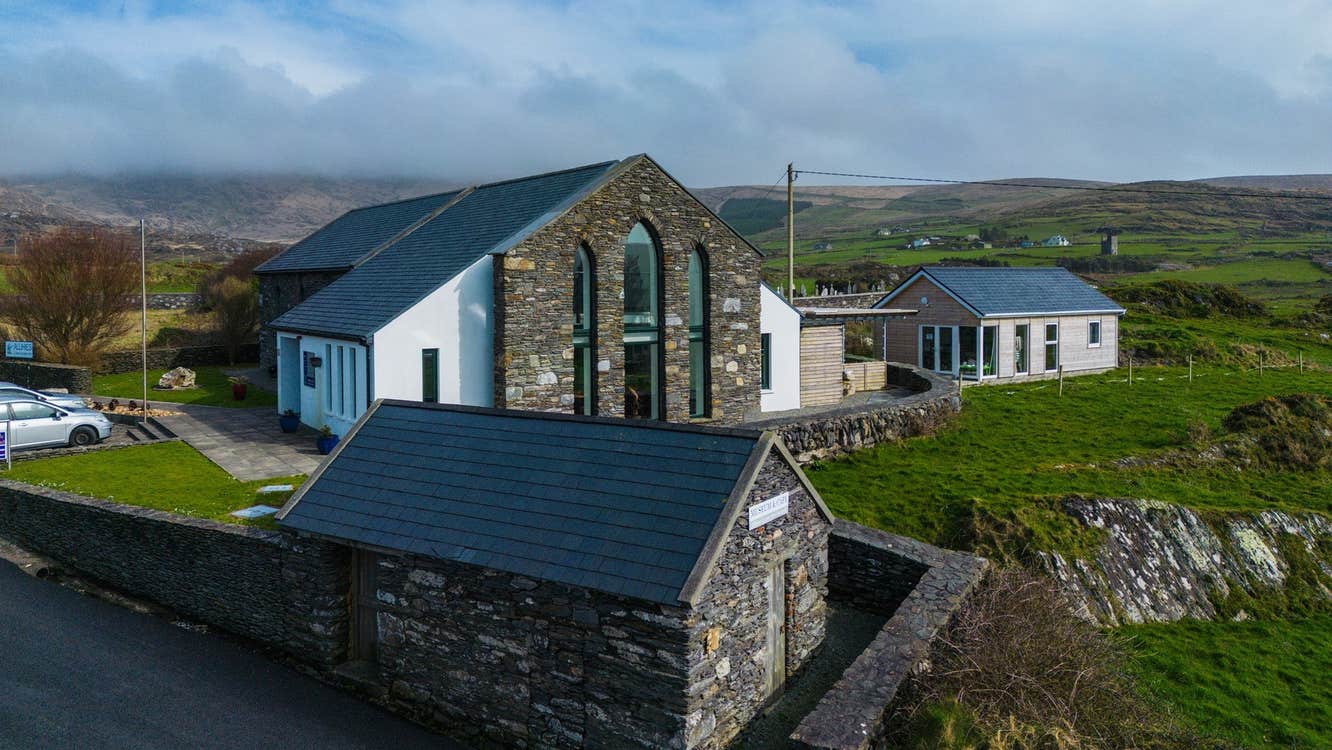Allihies Copper Mine Museum tells the story of the lives of the miners and the technologies they employed, using interactive media as well as original exhibits. Various 19th century machines powered by steam and water are depicted in detail, along with pumping equipment and an ingenious ‘Man Engine’ which carried the miners a long way down to the depths of the mines. From maps of the various underground workings, one can gain an idea of the enormous extent of their endeavours. Information on the geology of the area is accompanied by some excellent geological exhibits.
There is a section devoted to the Cornish community and another to those Allihies miners who left to work in Butte, Montana, where substantial mining operations evolved. Many of today’s Butte residents bear the same surnames as Allihies families. Daphne du Maurier based her book ‘Hungry Hill’ on the Puxley family, who owned the Allihies mines in the 19th century and the story of the real people is no less fascinating. A more scholarly history of the mines was written by R A Williams, ‘The Berehaven Copper Mines’. The original 19th century cost books are on display. These give some interesting insights into the lives of the miners and the hardships they endured.
There is a café on the premises and an art gallery that hosts temporary rotating exhibits of works from the area’s vibrant artistic community. The substantial sandy beach of Ballydonegan, formed by particles washed down from the mines on the mountain above, can be seen from the café windows.
The Copper Mine Trail is a fascinating marked walking route that takes in the mines, manmade reservoirs, gunpowder magazine, Ballydonegan Beach and spectacular mountain views. Maps are available at the museum.
Hop on Ireland's only Cable Car to Dursey Island.
